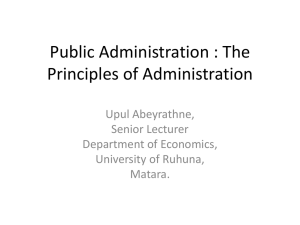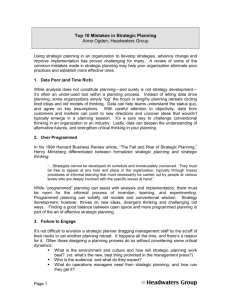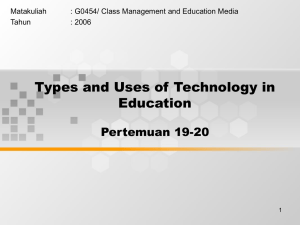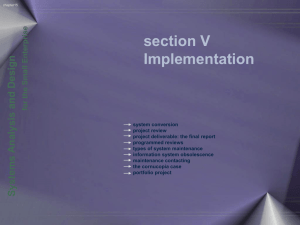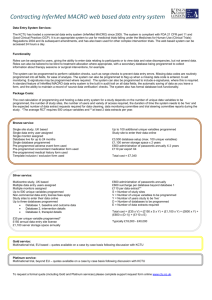Introduction to Public Policy
advertisement
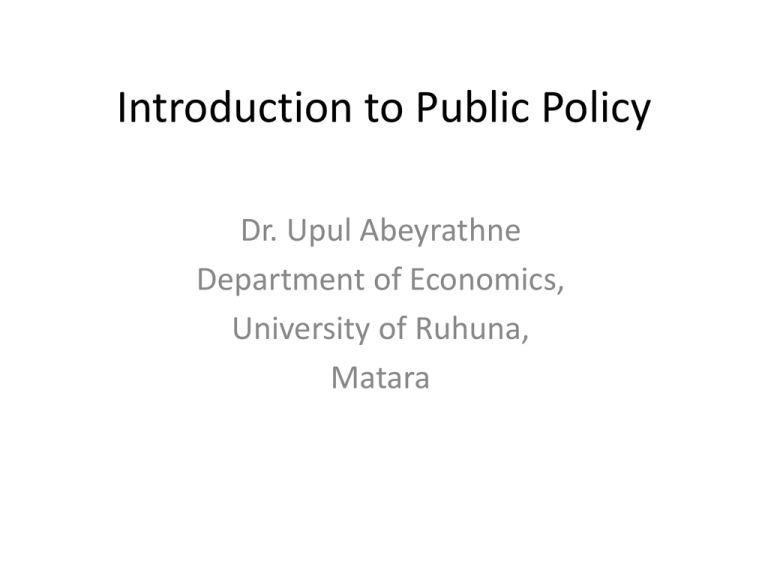
Introduction to Public Policy Dr. Upul Abeyrathne Department of Economics, University of Ruhuna, Matara Relationship Between Public Policy and Politics • The pioneers have distinguished between policy and policy implementation. • Policy is a matter of value selection, a power struggle. • Policy implementation is technical. Meaning of Public Policy • “What Government do, why they do it and what difference it makes” (Thomas R. Dye ,1998, Understanding Public Policy) • “A projected program of goals, values, and practice” (Harold Lasswell, 1979, Politics and economics of Public Policy) • “ A selected line of action or declaration of intent” (cited in David Easton, 1965, A system analysis of political life) Meaning of Public Policy • A purposive course of action followed by an an actor or set of actors in dealing with a problem or matter of concerned.”(Anderson, 1997, Public Policy Making ) • All of the above definition speaks of 1. A series of action 2. Public problem either real or perceived • They are the outcome of deleberation of political authorities Meaning of Public Policy • The public policies are subject to be changed on account of better information. This highlights the cyclic dimension. What does not grasp in the Above Definitions 1. Past dimension 2. Present Dimension 3. Future Dimension Features of Public Policies 1. Goal oriented 2. Are outcomes of Government’s collective actions 3. Public policies depict the relationship a part of political system maintain with its specific environment 4. Public policies may either be positive or negative (Action or inaction) Policy and decisions • Policy is also a decision but it is more than a decision. It is broader. • The core of a decision making is to make a choice from the alternative available in order to take an action • Programmed and non-Programed decision • Public Policies are broad directions that government lays down in order to take decisions . Policy involves a series of decisions Characteristics of Policy Making • It is a complex process (Many actors connected through communication and feed back, some forces are observable. Some are hidden) • It is a dynamic process (It is a continuing activity for sustenance within a structure. It requires continuous inputs of resources and motivation.) • Policy Making Comprises various components Characteristics of Policy Making • • • • • • • Policy Structures make different contribution Policy making is a species of decision making Lays down major guidelines Results in Actions Directed at Future Formulated by competent authority Aims at public interests Policy Analysis • “Description and explanation of the causes and consequences of governmental activity” (Thomas Dye). He is in the opinion that public policy analysis should aimed at explanation rather than prescription. Accordingly the role of policy analyst is to attempt at developing and testing general propositions about the causes and consequence of public policy and to accumulate reliable research findings of general relevance. Policy Analysis • Some people like Grover Starling differs from the foregoing view. They think that policy study is interdisciplinary and should aim at facilitating to reach sound policy decisions. Types of Public Policies • Substantive : They are concerned with general welfare and development of the society. They do not relate to any specific segment of society. • Regulatory: There are sectors that need to be regulated to meet the requirments of public interests. Types of Public Policies • Distributive : They are meant for specific segment of society. Health, education and poverty alleviation are some important areas in this regard • Redistributive : Is concerned with fundamental re-arrangement of policies to make changes in the sphere of social and economic. It aims at avoiding disproportionate distribution of wealth and income. Types of Public Policies • Capitalization Policies: Some times, government give subsidies to individuals and companies and they make no provision for public welfare. Scope of Public Policy • It is dependent on the role assumed by the state • Even in this globalized capitalist minimal state, government has some inalienable duties (E.G. Husbandry and Midwifery Role etc) Two important Key Worlds • None –programmed Decisions: Herbert A Simon distinguishes between Programmed and non-progrmmed Decisions. NonProgramme decision are new, novel and not structured. There is no ready made guidelines to make such decisions. They require innovation and creativity • Programmed Decisions: Have take according to the prescribed manner. They are routine.


